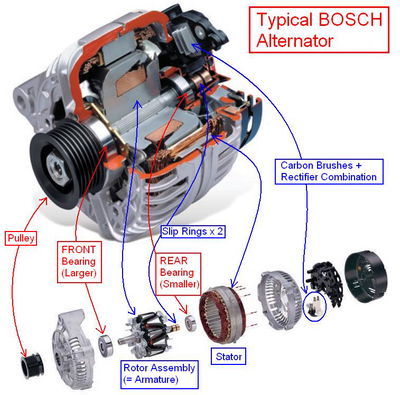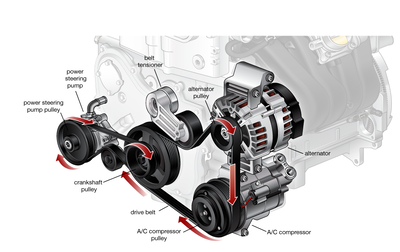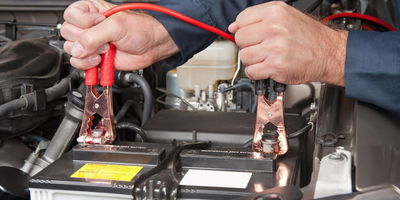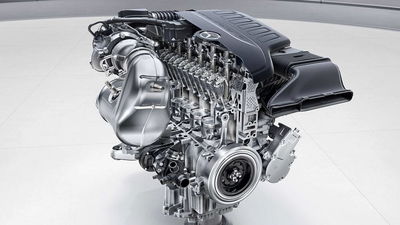What Is An Alternator And What Happens When It Fails?

It’s quite startling how much equipment now found on cars runs off electricity. Where belts once sapped precious energy from the engine’s crankshaft to run multiple ancillary components, manufacturers like Mercedes are now looking to use larger battery packs to ‘electrify’ most of the ancillaries. However, all this additional electrical power doesn’t come from nowhere, hence the need for larger car batteries like Merc’s 48V units. But with batteries comes the need to charge them to keep that power supply flowing to where it needs to go. So into the mix comes the alternator.
Put simply, alternators take mechanical rotational energy from the powertrain and convert it to an electromotive force. This then provides an electrical supply to the battery to keep it charged while under load. Without an alternator, your battery would firstly take a large voltage hit from starting the car up and then slowly decrease in voltage output until the entire car comes to a halt through a lack of electricity.
Normally found bracketed to the side of the engine block, an alternator begins with a pulley which – through a serpentine belt – runs in-tandem with the crankshaft rotation, thus sapping a small amount of parasitic energy from the engine’s internal combustion output. This belted connection therefore provides the alternator with the mechanical rotational energy needed to start the conversion to electricity.
As the pulley spins, it also spins an input shaft into the alternator housing which in-turn spins a rotor. This rotor is essentially a rotating magnet and is situated in a chamber surrounded by the stator, a collection of coils wound around an iron core used to conduct electricity. As the rotor spins, the positive and negative poles of the magnet create a magnetic field which also rotates relative to the stator coils, creating an AC (alternating current) voltage.
To stop the battery from becoming overloaded by a constant voltage supply when driving, a voltage regulator is used. This regulator can change the current flow through the stator coils so that the exact amount of electricity needed is produced for the battery to stay topped up. If voltage production is too high, the regulator simply decreases the current flowing through the stator, keeping the electrical supply system in equilibrium.
The final stage of the alternator’s construction is the use of diodes within a rectifier. Unfortunately, car batteries need a DC voltage to supply to the car’s electrical components, therefore the electricity produced by the alternator has to change state. DC (direct current) voltage only flows in one direction, while AC voltage periodically changes direction. This method – pioneered by Nikola Tesla in the 19th Century – proved to be much more efficient at generating high voltages, precisely what cars now need.

Once the AC voltage has been created, the diodes take the supply from the stator and effectively act as a one-way system for the flow of electricity, converting it to a DC voltage supply. From there onwards, the battery is then free to supply electricity to the ignition, door locks, the instrument binnacle, headlights and a growing number of ancillary components in this age of electrification.
What can go wrong?

Alternators can fail in numerous ways, leaving you in your driveway with a silent ignition and a drained battery. The creation of the electric field and electromotive force within the alternator subsequently creates a serious amount of heat, and once the components within the assembly have gone through numerous heat cycles after every drive, the materials within will naturally degrade and cause the alternator to become less efficient in its electrical production.
Modern alternators thankfully come with cooling fans in-built to the front and rear of the alternator assembly which work in tandem with the spinning rotor to generate some cooling airflow. This has therefore vastly increased the longevity of alternators in comparison to the older units that used a single external fan. High-output alternators are now also regularly used in modern cars which produce higher voltages at idle and throughout driving to cope with larger electrical components like fancy sound systems and head-up displays.

With all the dirt and combustion grime that makes its home within the engine bay, the moving parts of the alternator can get gummed up with a whole load of nasty crap. This can directly affect a needle bearing which is situated in front of the rotor which allows the free spinning of the input shaft. As this bearing starts to seize from the build up of dirt, the rotor struggles to create the magnetic field needed to produce the required electrical output. The eventual seizing of this bearing will see your battery slowly dying until your car won’t start.
Faulty alternators can also have a large impact on battery life, as a unit that’s damaged or old will cause the battery to charge up and then subsequently dive time and time again, affecting its capabilities of holding electrical power. And a battery being supplied by a fully-functional alternator will generally last around four years of daily use before it struggles to hold charge, with a damaged or dirty alternator significantly reducing that time frame.

The charging of batteries is quickly becoming one of the most important areas of automotive development, being one of the main factors holding fully-electric cars back from dominating the world of internal combustion. Hybrid vehicles are now exploiting motors and generators that replace the need for both a starter motor and alternator, doing both jobs within one package. This will slowly lead to the use of beltless engines, rendering the alternator a prehistoric device from a time gone by.
Have you ever had a faulty alternator, leaving you stranded by the side of the road or unable to start your car? Comment below with your electrical-induced woes!













Comments
A failed alternator can leave you a little ‘flat’
Aaah, the alternator: single most mistaken component of the engine by non car people for a turbocharger lol.
“Pretty sure the alternator is like, an electric turbo dude” - some brodude trying to sound intelligent 2016
Or ricers
Fun fact, an alternator is also technically an electric motor!
F-350 rolling coal “its technically a hybrid”
👌🏻👌🏻
nah bro, thats a turbo
My car refused go beyond 80kmph when my alternator had started to fail. Everything was a false positive and after taking apart half the engine I found the culprit.
why cant alternator use exhaust gasses to charge the battery. basically a turbo alternator
it would proboubly just steal more power than it does with the normal setup.
I think alternators are too hard to turn under load to be driven by gases
It blows air in the engine and happiness comes out.
Never buy a cheap alternator unless you want to buy a new one on the next day :P I have learned my lesson
Had a jeep with an alternator issue would charge fine when it was cold but as soon as it warmed up a bit it would stop charging all together. I guess the heat under the hood caused something to expand and not generate power was kinda strange I thought. But a new alternator fixed the issue.
Pagination